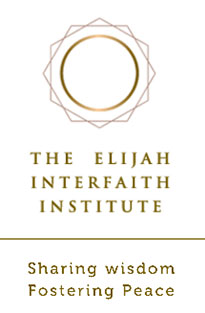The meaning of spirituality has developed and expanded over time, and various meanings can be found alongside each other. Traditionally, spirituality referred to a religious process of re-formation which "aims to recover the original shape of man", oriented at "the image of God" as exemplified by the founders and sacred texts of the religions of the world. The term was used within early Christianity to refer to a life oriented toward the Holy Spirit and broadened during the Late Middle Ages to include mental aspects of life.

Christian mysticism is the tradition of mystical practices and mystical theology within Christianity which "concerns the preparation [of the person] for, the consciousness of, and the effect of [...] a direct and transformative presence of God" or Divine love. Until the sixth century the practice of what is now called mysticism was referred to by the term contemplatio, c.q. theoria, from contemplatio, "looking at", "gazing at", "being aware of" God or the Divine. Christianity took up the use of both the Greek (theoria) and Latin terminology to describe various forms of prayer and the process of coming to know God.
Spiritual ecology is an emerging field in religion, conservation, and academia that proposes that there is a spiritual facet to all issues related to conservation, environmentalism, and earth stewardship. Proponents of spiritual ecology assert a need for contemporary nature conservation work to include spiritual elements and for contemporary religion and spirituality to include awareness of and engagement in ecological issues.

Christian meditation is a form of prayer in which a structured attempt is made to become aware of and reflect upon the revelations of God. The word meditation comes from the Latin word meditārī, which has a range of meanings including to reflect on, to study, and to practice. Christian meditation is the process of deliberately focusing on specific thoughts and reflecting on their meaning in the context of the love of God.
A spiritual practice or spiritual discipline is the regular or full-time performance of actions and activities undertaken for the purpose of inducing spiritual experiences and cultivating spiritual development. A common metaphor used in the spiritual traditions of the world's great religions is that of walking a path. Therefore, a spiritual practice moves a person along a path towards a goal. The goal is variously referred to as salvation, liberation or union. A person who walks such a path is sometimes referred to as a wayfarer or a pilgrim.
Centering prayer is a form of Christian contemplative prayer, to center awareness on the presence of God. This modern movement in Christianity was initiated by three Trappist monks of St. Joseph's Abbey in Spencer, Massachusetts in the 1970s, Fr. William Meninger, Fr. M. Basil Pennington and Abbot Thomas Keating, in response to the growing popularity of Asian meditation methods.
Secular spirituality is the adherence to a spiritual philosophy without adherence to a religion. Secular spirituality emphasizes the inner peace of the individual, rather than a relationship with the divine. Secular spirituality is made up of the search for meaning outside of a religious institution; it considers one's relationship with the self, others, nature, and whatever else one considers to be the ultimate. Often, the goal of secular spirituality is living happily and/or helping others.
New Monasticism is a diverse movement, not limited to a specific religious denomination or church and including varying expressions of contemplative life. These include evangelical Christian communities such as "Simple Way Community" and Jonathan Wilson-Hartgrove's "Rutba House," European and Irish new monastic communities, such as that formed by Bernadette Flanagan, spiritual communities such as the "Community of the New Monastic Way" founded by feminist contemplative theologian Beverly Lanzetta, and "interspiritual" new monasticism, such as that developed by Rory McEntee and Adam Bucko. These communities expand upon traditional monastic wisdom, translating it into forms that can be lived out in contemporary lives "in the world."
Wayne Robert Teasdale was a Catholic monk, author and teacher from Connecticut, best known as an energetic proponent of mutual understanding between the world's religions, for an interfaith dialogue which he termed "interspirituality". He was also an active campaigner on issues of social justice.
Interfaith Officiants are trained in world religions and inter-spirituality and can help people in identifying their own spiritual beliefs through a process of spiritual self-discovery. They can also officiate at events such as weddings.
Engaged spirituality refers to the beliefs and practices of religious or spiritual people who actively engage in the world in order to transform it in ways consistent with their beliefs.
Kurt Johnson is an American entomologist who is also a recognized figure in comparative religion and consciousness studies. His scientific career began while he was a Christian monk, during which time he completed his doctoral studies in evolution and ecology. He is known in science for his writing on taxonomy, evolution and ecology and in particular for his published research and popular writing on the scientific career of famous Russian–American novelist and lepidopterist Vladimir Nabokov. His book Nabokov's Blues was named a "top 10 book in science" in 2000 at the Washington Post, Library Journal, Booklist and HMS Beagle.
"Spiritual but not religious" (SBNR), also known as "spiritual but not affiliated" (SBNA), or less commonly "more spiritual than religious" is a popular phrase and initialism used to self-identify a life stance of spirituality that does not regard organized religion as the sole or most valuable means of furthering spiritual growth. Historically, the words religious and spiritual have been used synonymously to describe all the various aspects of the concept of religion, but in contemporary usage spirituality has often become associated with the interior life of the individual, placing an emphasis upon the well-being of the "mind-body-spirit", while religion refers to organizational or communal dimensions. Spirituality sometimes denotes noninstitutionalized or individualized religiosity. The interactions are complex since even conservative Christians designate themselves as "spiritual but not religious" to indicate a form of non-ritualistic personal faith.

Mysticism is popularly known as becoming one with God or the Absolute, but may refer to any kind of ecstasy or altered state of consciousness which is given a religious or spiritual meaning. It may also refer to the attainment of insight in ultimate or hidden truths, and to human transformation supported by various practices and experiences.

Elijah Interfaith Institute is a nonprofit, international, UNESCO-sponsored interfaith organization founded by Alon Goshen-Gottstein in 1997. The organization is headquartered in Jerusalem, with offices and representatives in different countries,

Monastic silence is a spiritual practice recommended in a variety of religious traditions for purposes including becoming closer to God and achieving elevated states of spiritual purity. It may be in accordance with a monk's formal vow of silence, but can also engage laity who have not taken vows, or novices who are preparing to take vows.

Contemplative Practices in Action: Spirituality, Meditation, and Health is an interdisciplinary scholarly and scientific book. It examines the nature, function, and impact of meditation and other contemplative practices in several different religious traditions, both eastern and western, including methods for incorporating contemplative practice into education, healthcare, and other human services. Edited by Thomas G. Plante and with a foreword by Huston Smith, the book was published in the United States by Prager in 2010. The book reviews evidences for health effects and includes 14 chapters divided among three major parts that focus on well-defined systems of practice, traditions as storehouses of many alternative forms of practice, and applications. It has been reviewed in several professional journals, including PsycCRITIQUES, and the Journal of Psychosocial Research,.
Contemplative psychology "is a psychology that forms an intrinsic part of the contemplative traditions of most world religions. The term 'contemplative psychology' therefore does not refer to academic psychological theory about contemplation, religion or religious behavior. It refers to the psychological insights and methods that are - often implicitly - present in the vision and practice of religions and that clarify and guide ones contemplative or religious development" (p. 82). "Contemplative psychology addresses the question of how we could intelligently approach and understand human life-experience" (p. 83).

Rami M. Shapiro, commonly called "Rabbi Rami", is an author, teacher, and speaker on the subjects of liberal Judaism and contemporary spirituality.
Han Frederik de Wit is a research psychologist at the University of Amsterdam in 1974. He moved to expanded outside the formal psychology field in search for guidance in his spirituality. De Wit became internationally acknowledged as one of the founders of Contemplative Psychology. Today he teaches meditation at the Shambhala centers in the Netherlands and instructs seminars in the psychology of Buddhism.







